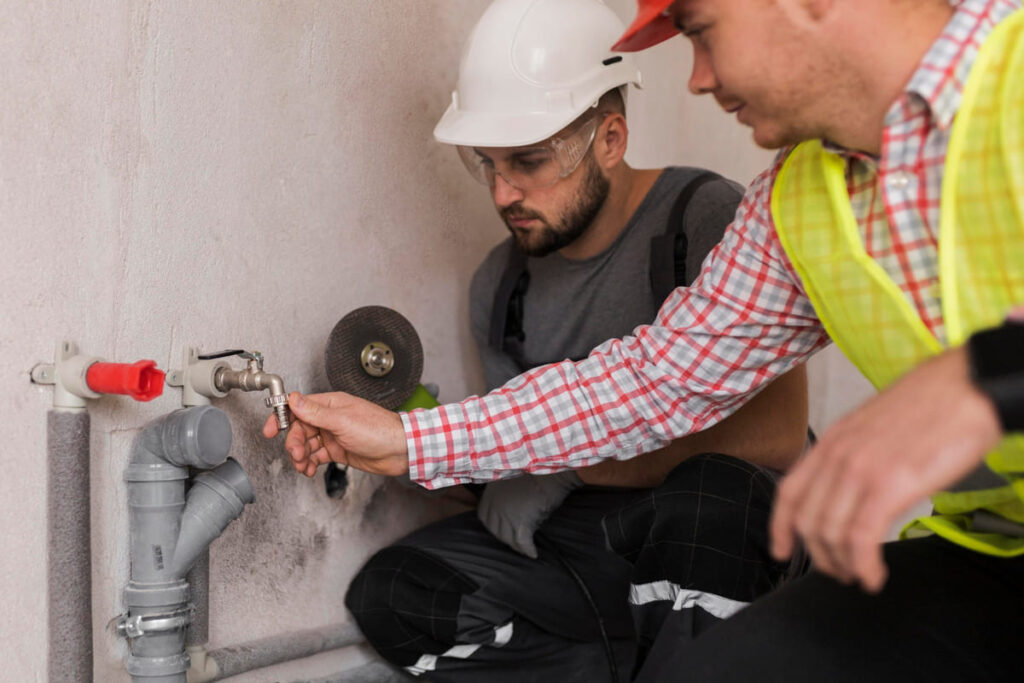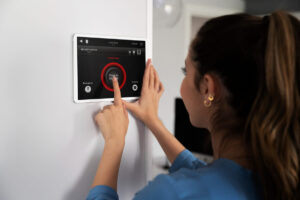Smart buildings—whether under construction or fully operational—face a constant threat from water leaks. A burst pipe or hidden drip can silently wreak havoc on structures and systems. Water damage is costly and disruptive: one global analysis of nearly half a million insurance claims found that water damage ranked as the third most frequent cause of commercial property loss. To combat this risk, smart building projects are increasingly using advanced types of water leakage sensors to detect leaks early and prevent disaster. This article explores common leakage problems, and explains four major types of water leak sensors (spot, cable, flow-based, and ultrasonic) with their operations, uses, and real-world examples.
Table of Contents
Problems and Consequences
Water leaks pose serious risks during both the construction phase and the operation of smart buildings. In construction, water intrusion can come from incomplete plumbing, rain penetration through unfinished roofs, or accidental damage to pipes during installation. Buildings under construction are often unoccupied after hours, so a leak can go unnoticed for a long time. Even a small water leak on a job site can quickly escalate: within hours, exposed construction materials may become saturated and humidity can create musty odors; within days, mold growth begins and wood or drywall can warp and split.
Indeed, water damage accounts for nearly one-third of contractors’ risk losses in construction, rivaling fire incidents in frequency and cost. A single unchecked leak during construction can delay a project by weeks and cost millions in repairs and rework. These delays affect not only builders but also owners awaiting occupancy, making timely leak detection critical.
In fully operational smart buildings, plumbing failures or envelope leaks (such as roof or window leaks) are an ever-present concern. Aging pipes, high-pressure HVAC systems, sprinkler malfunctions, or appliance failures can all lead to water escaping into the building. Such leaks can damage structural components and interior finishes, disrupt electrical and IT systems, and even compromise fire safety equipment. For example, a leaking pipe above a ceiling might drip onto electrical conduits or servers, causing short-circuits or equipment outages.
Occupants may experience discomfort if a leak shuts down heating or cooling systems, and there are safety hazards from slip-and-fall accidents or potential electrical shock. Water damage often triggers extensive cleanup and mold remediation, sometimes forcing areas of a building to close for restoration. It’s no surprise that insurers and facility managers treat water leaks as a top threat to building operations.
Consequences of undetected leaks can be severe in both scenarios. Structurally, water can weaken concrete and corrode steel reinforcements over time. Persistent dampness fosters mold in wall cavities or insulation, posing health hazards and requiring costly removal of materials. In foundations, water-saturated soil can lead to settlement or cracks. In interior spaces, leaks can ruin drywall, flooring, and woodwork, and can short out electrical panels or elevator equipment.
Critical building systems may fail if inundated—pumps, generators, and sensors can be knocked offline by water. Beyond physical damage, there are schedule and cost impacts: work stoppages for drying and repairs, replacement of damaged installations, and project delivery delays. For occupants of completed smart buildings, even a minor leak can mean temporary relocation or loss of services (for instance, if a water main leak requires the water supply to be shut off).
Real-world examples vividly illustrate these dangers. During a high-rise construction project, an unfinished HVAC plumbing line burst late in the day and went unnoticed over the weekend. By Monday, water had poured inside walls and down multiple floors. The flooding submerged electrical rooms and filled elevator shafts, resulting in millions of dollars in damage and a multi-week project delay while crews performed demolition and repairs.
In another scenario, a small leak in a wall cavity of an operational office building went undetected for weeks. The slow drip gradually soaked the insulation and eventually seeped into a network cabinet in the wall. By the time a stain appeared on the drywall, mold had spread and an important control module was ruined. These examples show how an undetected pipe burst or a tiny hidden leak can escalate into a major incident if not found early.
Suggested article to read: 5 Key Benefits of Using Water Leakage Sensors in Construction
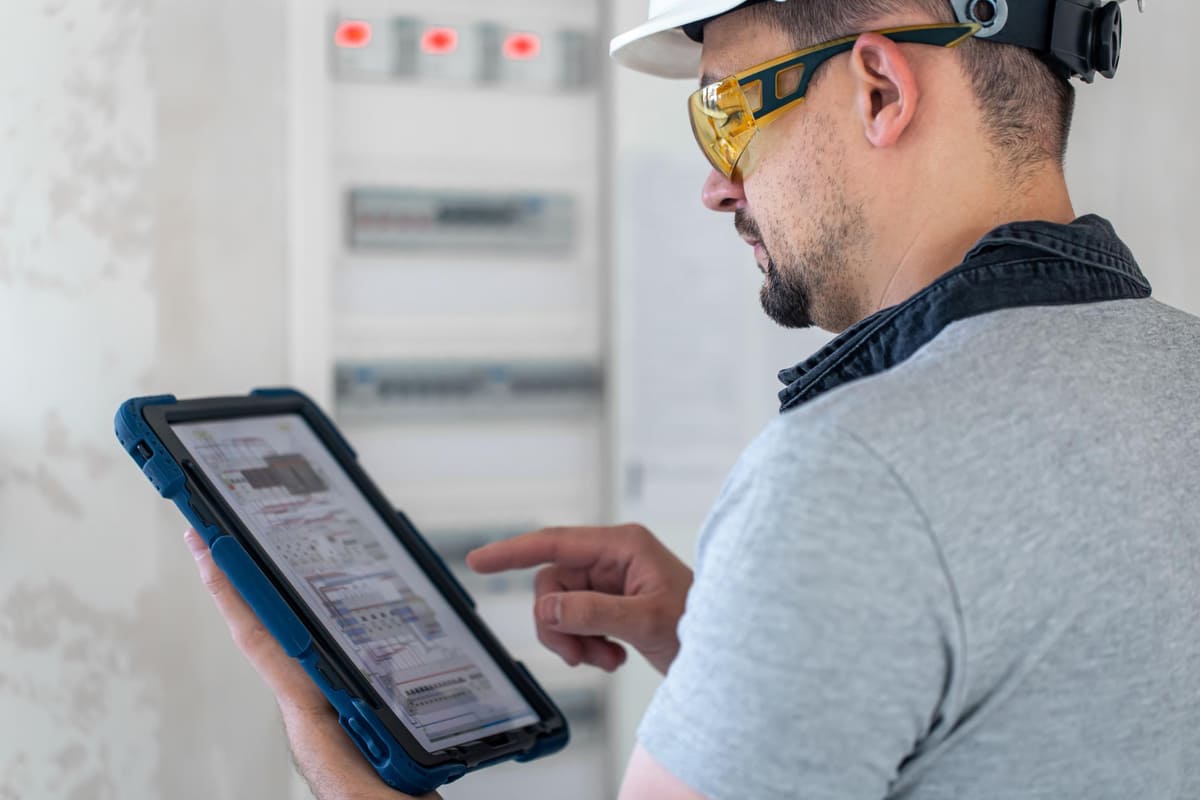
Solutions with Sensors
Early detection is the key to mitigating water leak damage. Smart buildings employ a range of water leakage sensors to monitor for unwanted water and alert personnel at the first sign of trouble. These sensors can be integrated into building management systems or IoT platforms to send instant alerts, trigger alarms, or even activate automatic shut-off valves. Four major types of water leakage sensors are commonly used, each suited to different applications:
1. Spot Leak Sensors
Definition and Operation
Spot leak sensors (often called flood sensors or “pucks”) are compact devices designed to detect water at a specific location. They typically consist of a small housing (often puck-shaped or a small box) with metal contacts or probes on the bottom. When water reaches the sensor, it bridges the contacts, completing an electrical circuit that triggers the alarm. Many spot leak detectors are battery-powered and communicate wirelessly when they sense moisture.
Simpler models might just sound a local buzzer, while advanced smart versions send alerts via Wi-Fi or building automation systems. These sensors are essentially point monitors: they guard one particular spot and respond as soon as water touches their sensing probes. Their operation is straightforward and highly reliable for direct contact leaks – if the sensor’s probes get wet, an alert is generated immediately.
Spot leak sensor: A typical battery-powered spot leak sensor (“puck”) placed on a floor. It has metal contacts on its underside and will trigger an alarm or wireless alert as soon as water pools underneath to complete the circuit. These small devices are simple yet effective for detecting leaks at a single location in real time.
Best Use Cases in Smart Buildings
Spot leak sensors work best in targeted high-risk locations. In smart buildings, they are commonly placed near potential leak sources such as under sinks, around water heaters, beneath boilers and pumps, beside toilets, or under appliances like dishwashers. Facility managers also deploy them in server rooms (under raised floors or below cooling units) and in mechanical rooms near sump pits or humidifiers. Essentially, any spot where even a small puddle is cause for concern can benefit from a spot sensor.
In a construction context, spot sensors might be temporarily placed to monitor known trouble spots—like under a newly installed HVAC condensate drain or below joint fittings during plumbing pressure tests. Their small size and wireless capability make them easy to deploy in large numbers, providing a network of mini sentinels across a building. However, each sensor only covers a limited area (usually just a few inches around it), so they are best for pinpoint coverage rather than wide-area monitoring.
Example Scenario from Real or Plausible Context
Operational example: In a smart office building, maintenance staff install a spot leak sensor in the drip pan beneath each air conditioning unit on the roof. One summer day, a drain line clogs and the pan begins to fill. The spot sensor immediately detects the water and sends an alert to the building management system. Thanks to this early warning, the maintenance team clears the blockage before the pan overflows and water leaks into the ceiling of the floor below.
Without the sensor, the first sign of the problem might have been water staining the ceiling or dripping onto office equipment. Construction example: As part of a commissioning test in a new data center, contractors place several spot leak sensors around an HVAC chiller unit when it is first turned on. During the test, a gasket on a pump fails and water starts pooling at the base. A sensor detects the leak instantly, allowing the team to shut down the system and fix the gasket. This quick response prevents water from spreading under the raised floor, saving the newly installed electrical cabling from damage.
2. Cable-Type Leak Sensors
Definition and Operation
Cable-type leak sensors (also known as rope sensors or sensing cables) detect water over a larger area by running a conductive cable along the floor or around equipment. The cable itself acts as the sensor: it is constructed with materials that can sense moisture anywhere along its length. Typically, the cable has a pair of conductors separated by a hydrophobic insulator. When water touches the cable, it creates an electrical path between the conductors, changing the circuit’s characteristics (for instance, reducing resistance) and triggering an alarm.
These cables can be tens or hundreds of feet long, covering perimeters of rooms or wrapping around pipes and equipment. The sensor cable connects to a controller module that monitors continuity or impedance. If any section of the cable gets wet, the module senses the change and raises an alert. Some advanced systems can even pinpoint the location of the leak along the cable by measuring the electrical distance to the water contact. Cable sensors essentially function as long, flexible water detectors that can snake through tight spaces and cover areas that would require many spot sensors to monitor.
Best Use Cases in Smart Buildings
Cable-type leak detectors are ideal for wide-area coverage and perimeter monitoring. In operational smart buildings, they are frequently used in data centers and server rooms: a rope sensor can be laid under a row of server racks or around the entire room’s perimeter, ensuring that any water ingress (from a cooling system leak or seepage under walls) is caught early. They are also used under raised floors that contain piping or near bundles of critical cables, where a leak anywhere along a run needs detection.
In mechanical and boiler rooms, a cable sensor can encircle the base of large equipment or line the edges of the room to catch spreading water. During building construction, cable sensors can be temporarily placed to protect areas like electrical rooms or elevator shafts when the building is not yet fully enclosed—one cable can guard an entire boundary where water might intrude.
Their sensitivity allows them to detect even small moisture accumulation, making them valuable for early warning. However, they are less suited for very dusty or dirty environments (dust or debris on the cable can sometimes trigger false alarms), so during active construction one must ensure the cables remain clean. Additionally, after a leak event the cable must dry completely or be replaced, as a wet rope sensor will not reset until the moisture is gone.
Example Scenario from Real or Plausible Context
Operational example: A large commercial bank operates a critical data center in the building’s basement. To protect it, they install a 50-foot leak detection cable under the elevated floor, looping it around all the server cabinet rows. Late one night, an HVAC cooling pipe joint above the floor develops a minor drip. The water runs down and contacts the sensor cable near one cabinet. Immediately, the monitoring panel alerts the facilities team to a leak under Rack 12. Technicians respond and find a small puddle forming, preventing a potential outage in the servers. The cable sensor allowed early detection across the entire server room floor with a single system.
Construction example: In a high-rise under construction, the general contractor places a temporary cable sensor along the threshold of a large atrium opening. Heavy rain one weekend causes water to seep under a not-yet-finished curtain wall and onto the floor. The long sensor cable detects the water spreading across the atrium slab and sends a wireless alarm to the site supervisor’s phone. Crews are dispatched on a Sunday to mop up the water and cover the area, averting damage to freshly installed flooring and preventing mold that would delay interior finish work.
3. Flow-Based Leak Detection Systems
Definition and Operation
Flow-based leak detection systems use water flow and pressure sensors to monitor the movement of water within a building’s plumbing network. Instead of detecting water outside the pipes, these systems infer leaks by noticing abnormal flow patterns inside the pipes. A common form is an in-line flow meter installed on the main water line (or on individual sub-feeds).
This meter continuously measures the flow rate of water passing through. If it detects continuous flow when there should be none (for example, water running when all fixtures are off), or an unusually high flow rate, it signals a possible leak. Some in-line flow sensors have a mechanical turbine (paddlewheel) that spins as water passes; the rotation speed corresponds to flow rate.
Other systems are non-invasive: they strap onto the outside of a pipe and use ultrasonic transducers to measure flow by sending and receiving sound waves through the pipe wall. By analyzing changes in flow rate or pressure (sometimes using high-speed pressure wave analysis), these smart systems can detect anything from a major pipe burst to a small drip. Many flow-based leak detectors are integrated with automatic shut-off valves. If a leak is detected, the system can close the main water valve to stop the water and limit damage. Advanced models incorporate machine learning to learn the normal usage patterns of the building and reduce false alarms.
Best Use Cases in Smart Buildings
Flow-based leak detection is best applied at the building or zone level for comprehensive coverage. In a smart building’s design, installing a flow sensor on the incoming water main provides a safeguard for the entire facility: if a pipe breaks anywhere in the building, the surge in flow or drop in pressure can be caught immediately. These systems are excellent for detecting large or hidden leaks that other sensors might miss. For example, a pipe leaking inside a wall cavity might not trip a spot sensor on the floor, but the flow monitor will notice the continuous water usage.
They are also useful in unoccupied or rarely visited areas (like an equipment room in a basement) because they don’t rely on someone noticing pooled water – they directly monitor the plumbing activity. During construction, temporary flow monitoring devices can be attached to water lines when hydro-testing new piping, automatically shutting water off if a major failure occurs. In occupied smart buildings, flow-based detectors protect 24/7 even when the building is empty (nights, holidays), giving peace of mind that a catastrophic leak will be caught.
However, flow systems cannot pinpoint the exact location of a leak – they only tell that a leak exists and perhaps its magnitude. They can also sometimes give false alerts (for instance, the normal refill of a large water heater tank might be misinterpreted as a leak if not properly accounted for). Despite these nuances, flow-based detection is a powerful tool for whole-building leak protection and is often used in tandem with point sensors for maximum coverage.
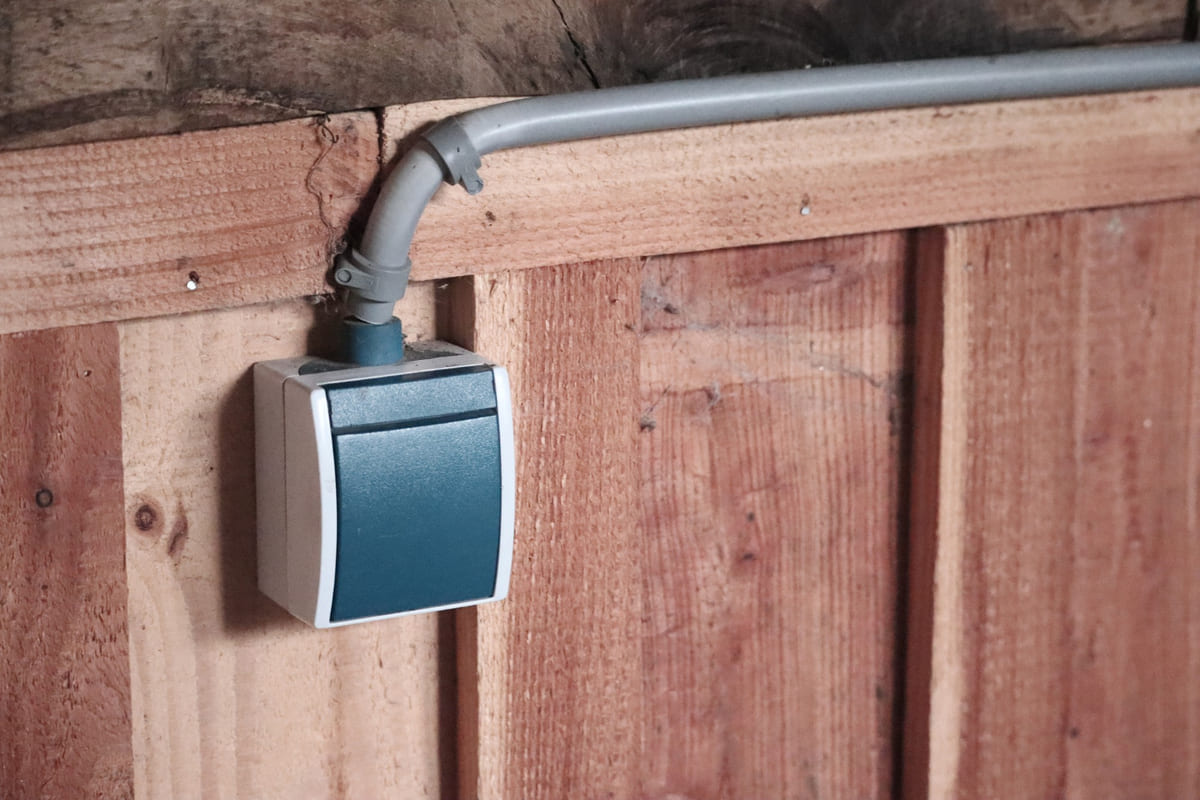
Example Scenario from Real or Plausible Context
Operational example: A multi-story smart office building is equipped with a centralized leak detection system that includes a flow sensor on each floor’s supply line. Late one evening, a pipe in a 3rd-floor restroom bursts due to a faulty fitting. Gallons of water begin gushing into the restroom and adjacent corridor. Within seconds, the flow rate through the 3rd-floor sensor jumps far above normal.
The system immediately recognizes this as a pipe break and triggers an alarm while automatically closing an electric shut-off valve for that floor. Water flow is stopped before the flood can spread to lower floors. The building manager is alerted by text message, and maintenance crews arrive to find wet floors but no major structural damage—thanks to the flow sensor, what could have been a multi-floor disaster was contained quickly. Construction example: In a nearly completed residential tower, the plumbing subcontractor installs a smart flow meter on the main line during the testing phase.
One night, a coupling on a remote sprinkler line in the attic level fails, starting to discharge water. The flow sensor detects an unusual continuous flow after hours and sends an alert. The site team responds and finds the leak in the nick of time. In this case, the flow-based system served as a watchdog for the entire building’s plumbing, catching a leak that would have otherwise gone unnoticed in an unfinished attic space.
4. Ultrasonic Leak Sensors
Definition and Operation
Ultrasonic leak sensors detect water leaks by “listening” for the unique sounds that escaping water produces. When pressurized water leaks out of a pipe, fitting, or crack, it generates broadband high-frequency acoustic vibrations—often in the ultrasonic range above human hearing. Ultrasonic leak detection devices use sensitive microphones or transducers to pick up these subtle noise signatures. Unlike flow meters, they do not need to be in contact with the water or plumbing; instead, they can be mounted in a room or on a wall to monitor a broad area for the sound of leaking water.
Advanced acoustic leak sensors analyze the sound frequencies and patterns to distinguish leaks from background noise. For example, the high-pitched hiss of a pinhole spray or the repetitive drip of a water leak has acoustic characteristics that the sensor’s algorithm can identify. Some ultrasonic sensors continuously sample the environment at low rates, “listening” for anomalies, which allows them to operate on battery power for long periods.
When a potential leak sound is detected, the sensor will raise an alarm or send a signal to a central system. This technology provides a stand-off method for leak detection—meaning the sensor can detect leaks from a distance (often many feet away, even through walls) without needing to touch the water. It essentially functions as an electronic ear, tuned to the ultrasonic noise of turbulence or dripping caused by leaks.
Best Use Cases in Smart Buildings
Ultrasonic leak sensors are especially useful for monitoring large or inaccessible areas and detecting hidden leaks. In smart buildings, they can cover spaces where installing numerous contact sensors would be impractical. For instance, one acoustic leak detector placed in a drop ceiling space can monitor an entire room’s plumbing grid for any abnormal water sounds. They are valuable in places like behind walls or above ceilings – areas where a slow leak might otherwise go undetected until visible damage occurs.
Facility managers might deploy ultrasonic sensors in mechanical chases, crawlspaces, or attics to listen for leaks in pipes that run through these voids. During construction, an acoustic leak sensor can be temporarily used in closed-in wall sections or shafts (like behind a finished drywall where pipes are present) to catch any leak sounds during system pressurization tests.
Another application is retrofit situations: in historic or finished buildings where one cannot install new wiring or cut pipes for sensors, a battery-powered ultrasonic detector can be added without intrusive modifications. These sensors complement other leak detection methods by covering the gaps – for example, they might detect a spray from a pipe overhead that never reaches a floor sensor because the water evaporates or is absorbed.
However, ultrasonic leak sensors must be tuned to avoid false alarms from ambient noises (e.g. machinery, HVAC airflow). They often employ signal processing to filter out normal environmental sounds. Very small leaks that make minimal sound might be missed if below the sensor’s sensitivity threshold or masked by noise. Despite these challenges, modern acoustic leak detectors with good calibration can achieve highly sensitive monitoring. They effectively act as an early warning system for hard-to-see leaks, adding an extra layer of protection in a smart building’s leak detection strategy.
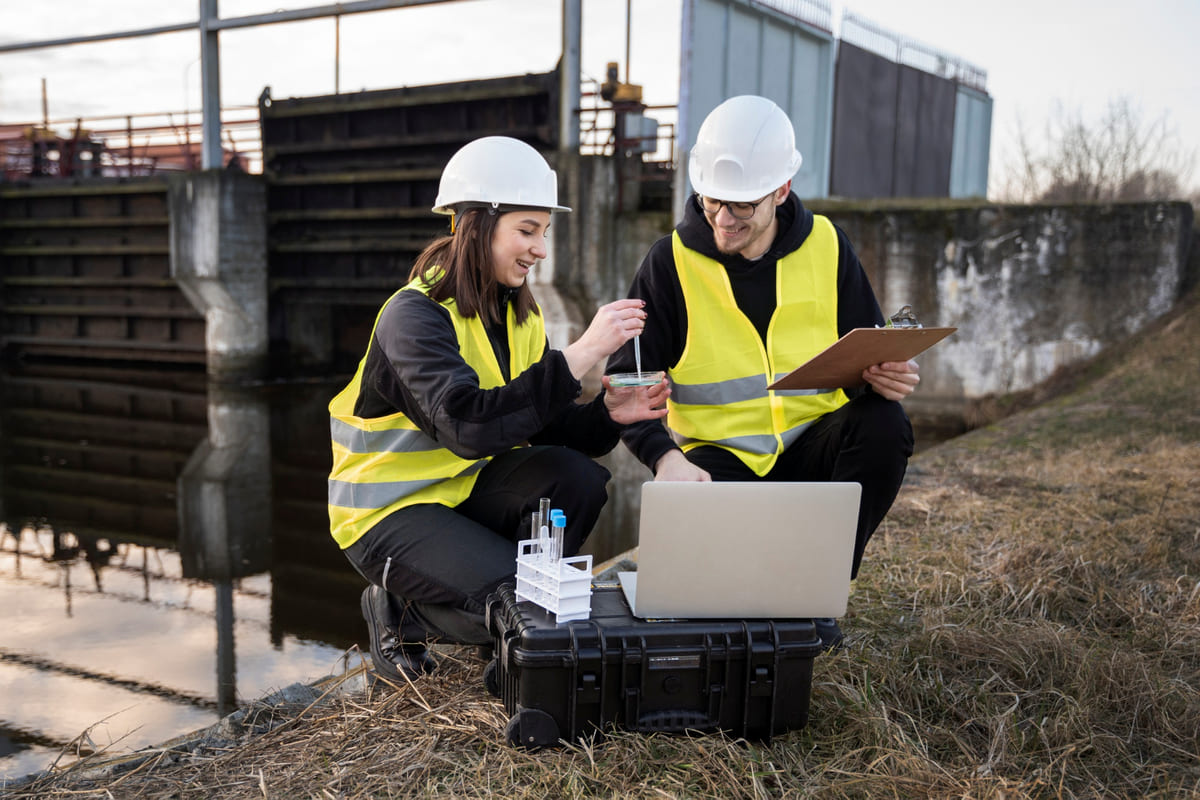
Example Scenario from Real or Plausible Context
Operational example: A museum housed in a smart historic building cannot easily have wired sensors in its walls, so it uses a few ultrasonic leak detectors placed in key rooms. Late one night, an old pipe joint behind a gallery wall develops a tiny spray leak. The escaping water makes a faint hissing noise inside the wall cavity. The ultrasonic sensor in the room detects this unusual high-frequency sound pattern and signals an alert. Maintenance staff respond and find a damp section of wall, intervening before the leak grows or priceless artworks are damaged.
Construction example: In a new hospital under construction, contractors install an acoustic leak sensor temporarily in the ceiling space above the MRI room when the fire suppression system is being tested. During the test, a loose sprinkler head begins to drip steadily. The sensor “hears” the dripping sound hitting the floor above the ceiling tiles and flags it. Workers are alerted to the small leak and tighten the sprinkler head before it can fully pop open or cause water damage to the expensive MRI equipment below. In both cases, the ultrasonic leak sensor provided an extra set of ears, detecting water escape that was invisible to the eye.
FAQs
How do the four types of water leakage sensors differ in function?
Each of the four types of water leakage sensors has a unique way of detecting leaks. Spot leak sensors use direct contact probes to sense water at a single point. Cable-type sensors detect moisture along the length of a rope-like cable, covering larger areas. Flow-based leak detectors monitor water flow or pressure inside pipes to identify unusual usage patterns that indicate leaks. Ultrasonic leak sensors listen for acoustic signatures (high-frequency sounds) produced by water escaping under pressure. In summary, spot and cable sensors react to water touching them, flow sensors watch for plumbing anomalies, and ultrasonic sensors hear leaks from a distance.
What are the best types of water leakage sensors for early leak detection in smart buildings?
For early leak detection, a combination of sensor types is often best. Spot leak sensors are great for immediately catching small puddles at specific high-risk spots (like under a valve or appliance). Cable-type sensors excel at early detection over wide areas – they can sense even a few drops of water anywhere along their length, which is ideal for catching leaks as soon as they start spreading.
Flow-based sensors provide early warning for hidden or large leaks by noticing abnormal water flow, even if the water hasn’t reached a floor or sensor yet. Ultrasonic sensors can detect the faint sounds of leaks (such as a drip or spray) at a very early stage, even behind walls. In a smart building, using multiple sensor types together ensures that whether the leak is big or small, visible or hidden, an alert will be generated as early as possible.
Which types of water leakage sensors are most suitable during a building’s construction phase?
During construction, the priority is to detect leaks in real time across a changing environment. Cable-type leak sensors are very useful on construction sites because one long cable can cover a broad area or perimeter where water might intrude (for example, across a floor or around equipment) even before interior finishes are in place. Flow-based leak detection systems are also highly suitable during construction—contractors can install temporary smart flow meters on main lines or sections being tested to catch any pipe burst or major leak instantly and even trigger automatic shutoff.
Spot leak sensors may be used in targeted locations during construction (such as under temporarily installed equipment or in areas where minor leaks have been an issue). Ultrasonic leak sensors can be deployed to monitor for leaks in enclosed spaces or behind walls that are already sealed up, where visual inspection isn’t possible. Overall, cable sensors and flow-based systems are the most commonly used during active construction testing, with spot and ultrasonic sensors as supplementary tools for specific scenarios.
Is it true that all types of water leakage sensors need direct contact with water to detect leaks?
No, it is not true – not all types require direct contact with water. Spot leak sensors and cable-type sensors do need the water to physically reach them; they detect leaks by direct contact with moisture. However, flow-based leak detectors do not need external contact with water – they infer leaks by monitoring water movement inside the plumbing (so they can catch leaks even if water hasn’t pooled anywhere yet).
Similarly, ultrasonic leak sensors do not require contact; they can detect leaks from a distance by picking up sound waves produced by water escaping. These non-contact methods allow detection of hidden leaks behind walls or in closed systems. In summary, while traditional point and cable sensors need to touch the water, flow-based and ultrasonic sensors can sense leaks indirectly through flow anomalies or sound, without being in the water itself.
Conclusion
Water leakage sensors play a vital role in protecting smart buildings from one of the most common and costly hazards. By combining the four types of sensors—spot, cable, flow-based, and ultrasonic—building managers can achieve layered leak detection coverage. Spot leak sensors excel at immediately catching puddles at known risk points, while cable-type sensors extend coverage along floors and around critical equipment. Flow-based leak detection systems guard the entire plumbing network, swiftly identifying leaks anywhere in the building and even initiating automatic shut-offs. Ultrasonic leak sensors add another dimension by listening for hidden leaks in places other sensors might not reach.
Together, these technologies significantly improve safety and operational efficiency: leaks are detected in their early stages before they can cause structural damage, mold growth, or equipment failures. Prompt detection means repairs can be made with minimal disruption, avoiding extensive downtime for building operations or construction schedules. In essence, the 4 types of water leakage sensors create a smart, proactive defense system for modern buildings. They give engineers and facility teams the ability to respond to water issues in real time, ultimately protecting assets, reducing insurance claims, and ensuring the comfort and safety of occupants.
Resources:
- LAIIER. (2022). The 4 Types of Water Leak Detectors a Smart Building Needs.
- MicroPhonon. (2022). AquaPing – Open source acoustic water leak detection (Crowd Supply project page).
- Allianz Global Corporate & Specialty. (2015). Global Claims Review: Water damage insights. (Referenced via Laiier blog).
For all the pictures: Freepik
Suggested article for reading:
4 Types of Fire Detection Systems and Where to Use Each One in 2025
Top 7 Sustainable Digital Fabrication Innovations Leading the Green Revolution
5 Tips on Choosing a Construction Company for Residential and Commercial Projects
8 Key Features of Next-Gen Fire Detection Systems
10 Digital Fabrication Trends Shaping the Future of Smart Manufacturing

